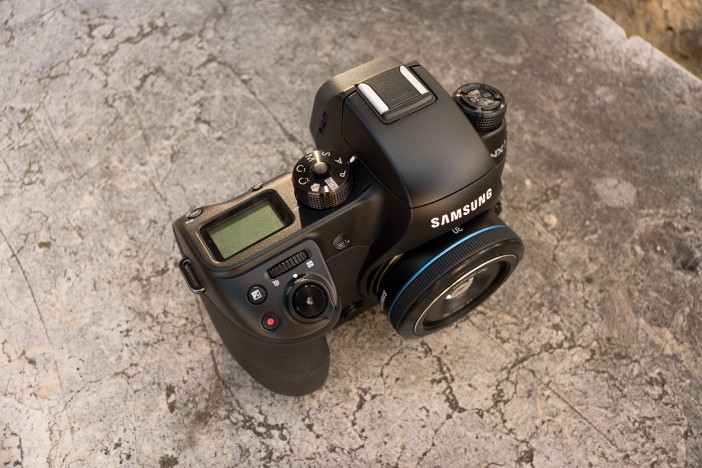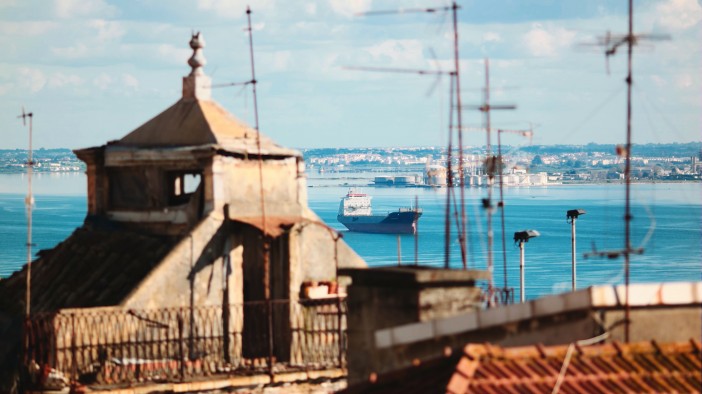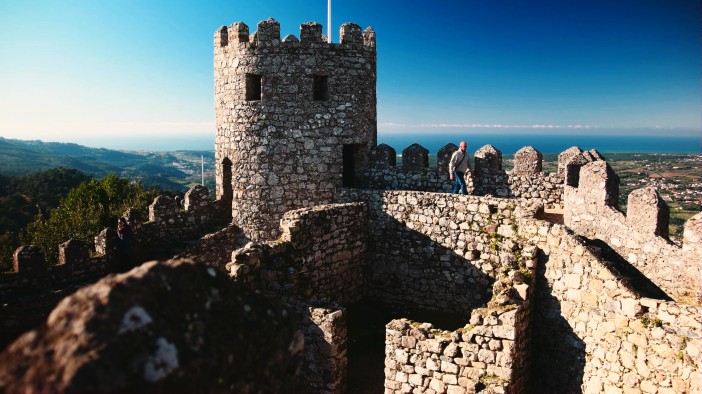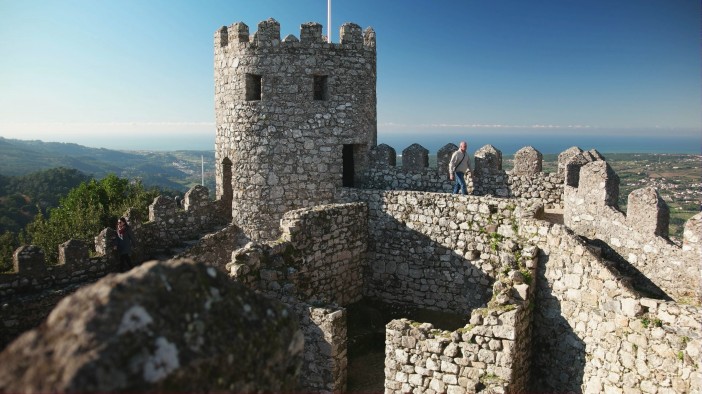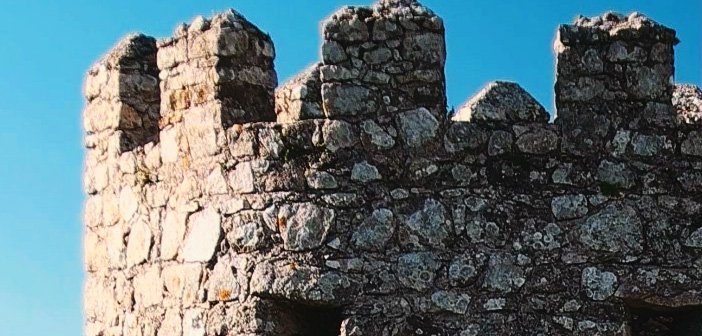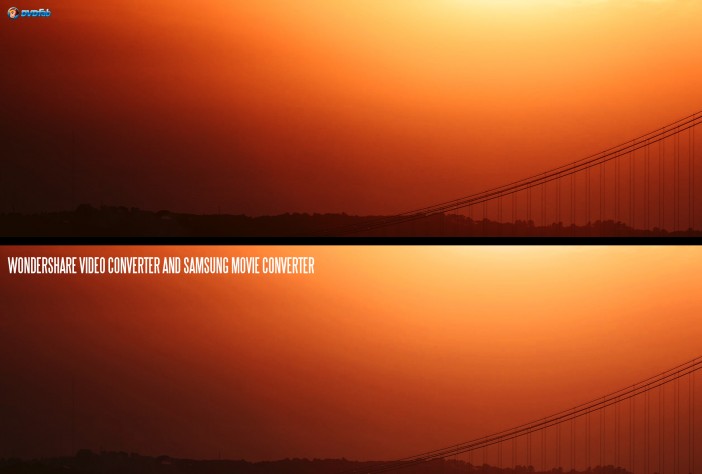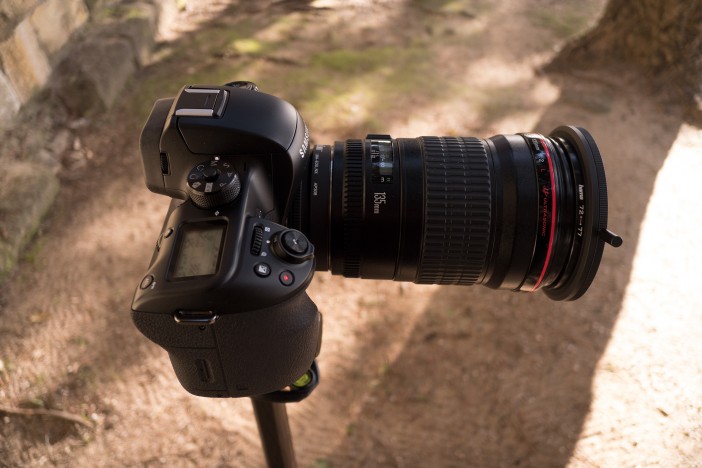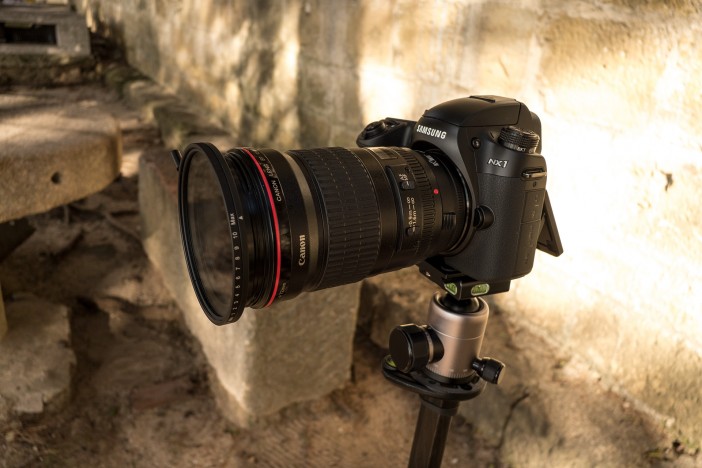https://vimeo.com/114834209
The light in Berlin is dreary during winter, so I took the NX1 off for a break in the Portuguese city of Lisbon last week. This place has the best weather in Europe and the best light. A magical place.
It gave me a perfect chance to get under the skin of the NX1 – and see just what it can do in the real world.
The criticism levelled at the NX1 in a recent lab test really missed the point for me. Let’s deal with the supposed weaknesses first. The rolling shutter is no worse than the Canon 1D C in the real world or the Sony A7S’s full pixel readout for that matter. What’s more it is completely expected. It’s a limitation not of the NX1 but of consumer CMOS sensor technology on the cutting edge in 2014, doing these kind of full pixel readouts for the first time. The NX1 does 28MP at up to 30fps. An enormous amount of lines to get through in one scan. The only reason the 1D C and GH4 have marginally less skew is that they both crop the sensor to do that 4K output and don’t read out any more pixels than they have to. The downside is the field of view crop. The NX1 has no field of view crop and does a 6.5K readout. Switch to 1080p mode and you have the least rolling shutter of any DSLR or hybrid camera available today and still no crop. Although quality in 1080p mode is pretty basic due to heavy pixel binning (quite a lot of aliasing) switch to 120fps and quality remains the same, which means that the NX1 actually has the best quality slow-mo for $1500 out there, with the least rolling shutter. You have to get the FS7 for $8k if you want better 120fps 1080p.
People have raised concerns about dynamic range. This depends both on your workflow and the sensor in the NX1. Some H.265 converters crush and burn the footage with their own dodgy gamma curve, hiding what the sensor is actually capable of. In the raw stills this Samsung chip delivers similar dynamic range to my D750 which has 14.5 stops, the best yet measured with the possible exception of the Pentax 645Z. Dynamic range is not the issue on the NX1. With the 4K internally, dynamic range and resolution are on par with the 28MP JPEG output of the camera. What other APS-C camera in the region of $1500 can you compare the video output to a 28MP JPEG? 7D Mark II users would have fun trying that one!
Currently, the NX1 is the only Super 35mm 4K camera of its kind. The GH4 has a smaller, noisier sensor, albiet very capable as a whole package especially with the Metabones Speed Booster and an external recorder (10bit!), while the A7S is fantastic but a lot more money!
One of the main reasons I got the NX1 was to use my Cooke PL lenses as intended on a Super 35mm sensor in 4K. The A7S can do an APS-C / Super 35mm crop for these lenses but it isn’t ‘really’ 4K in this mode. I can’t use these lenses on the Canon C100 Mk II and I just love picking out tiny detail in 4K on a 5K iMac display. It kicks the ass of the C100 Mk II, frankly.
Image quality
At ISO 200 the NX1’s video is so completely free of noise, locked down shots look less like ‘video’ more like high quality stills. There’s zero mosquito noise introduced by the codec like the 5D Mark III suffers from. Also the transport circuits from sensor to image processor seems extremely clean. The result is a silky smooth image but like the 1D C under ISO 400 it too suffers from the occasional bit of banding as a result of being so noiseless. This can be reduced in post. You can add small amounts of film grain to dither the bands together smoothly and use a different transcoding app for H.265. The other solution of course is the Atomos Shogun. I am told Samsung have been in contact with Atomos to ensure compatibility with the Shogun but I don’t know how far along this process is at the time of writing. Philip Bloom says he couldn’t get an image on his beta unit. Hopefully the ones that are shipping will work already. You will need to set the HDMI output to 3840 x 2160 rather than 4096 I think.
The NX1’s sensor produces striking Canon-like colour, which seems to benefit from a stronger signal to noise ratio than the GH4. It doesn’t de-saturate at higher ISOs as much.
This is a 4K frame exported from Premiere, graded in Film Convert Pro 2.1. Click to enlarge.
Let’s now take a 1:1 crop of this…
This shot was taken with my Canon 135mm F2.0 wide open with the also very sharp SLR Magic variable ND filter (currently on sale at £99 from £149 here).
There’s little need to invest in a whole new range of Samsung lenses though the 30mm F2.0 pancake I did use for a few shots – nice little travelling companion, cheap and sharp.
Here’s another shot, in challenging light – no dynamic range problem here –
That shot is a combination of the brightest possible direct sunlight and some very dark shade. Neither the blacks are crushed nor the highlights burnt.
And if we want a flat image, then here it is without the grade… even more to dynamic range to play with…
And at 100% crop –
Here’s an example of how the transcoding app has an influence on banding caused by having such a clean noiseless image along with a compressed codec and 8bit colour depth… As you can see DVDFab produced a smoother gradient in the sky here, but it has other trade offs which I’ll get to in a minute.
H.265 to reality
To get an editable image from the NX1 you currently need to transcode H.265, or use an external recorder for direct to 4K ProRes (great for a fast turn-around). It’s a myth H.265 is a ‘bad thing’ on this camera. It has two massive advantages that no other 4K camera yet offers. The masters are always the ones you keep to archive when the edit has been locked and these 4K masters are the smallest of any camera to date. This equates to a huge drive space saving over time, not to mention the money it saves you. The insanely high efficiency of H.265 encoding means that image quality doesn’t suffer as a result compared to the same data-rate with H.264.
Sure, the files need to be transcoded, but converting to ProRes LT has the advantage that the files are smoother to playback and edit than 4K H.264 from the GH4. On my 2013-spec iMac I have no problem editing NX1 ProRes LT even with Film Convert applied on the timeline in Premiere (GPU accelerated) and the monitor set to full resolution. ProRes is after all an edit friendly codec. It is designed to be edited with a low CPU overhead. H.264 and H.265 are much more processor intensive.
The supplied Samsung app on Pro (highest quality) spits out a H.264 file at 250Mbit/s, which isn’t even editable on a top spec 2013 iMac with G-Tech RAID thunderbolt drive. There’s a reason Panasonic kept the GH4 H.264 codec to 100Mbit/s! Wondershare Video Converter Ultimate coverts NX1 footage to 4K ProRes 422 LT at 330Mbit/s and this my humble iMac slices through like butter, so this is my workflow of choice.
As for native editing of H.265, two things need to happen before we do that. Apple and Adobe need to implement FCPX / Premiere support for H.265 and hardware support for H.265 needs to be present on your Nvidia / AMD graphics card. It is unlikely the Intel CPU in your machine will even be able to handle it without help from dedicated hardware chips, of which the NX1 has quite a few.
Discoveries
There’s another app called DVDFab which somehow has a knack of producing nice looking H.264 at just 50Mbit/s, smaller files than even the original H.265s, with less banding in skies and large shaded areas of an image than Wondershare or the Samsung app. What’s the catch? Sadly this app really murders the blacks and clips your highlights, thus reducing dynamic range, but it does come in handy for fixing certain shots that may exhibit banding. Just don’t expect a flat look out of it.
There are such shots in my video showing the banding – I didn’t fix them, rather left them in as an example of what the problem looks like. It helps to add a bit of noise and to do the DVDFab convert instead of in Wondershare and apply a contrasty curve in post. Takes the extra time but it is nice to know you can fix it.
For this shoot I used the in-camera picture profile of “Standard” with -10 sharpness, 0 contrast (middle setting) then transcoded H.265 with Wondershare, applying contrast -6 in the edit panel for all clips. ProRes 422 LT codec.
Battery life has held up extremely well on my shoots. Astonishingly good considering what is going on under the hood, and I only had the one battery. It isn’t quite as long-running on a single battery as the GH4 but it’s not far off. Where it has an advantage is the USB 3.0 port that supports very fast charging in-camera. In under 1 hr 30 the NX1 would charge from flat to full from a portable 8000mHa battery which cost me 30 euros on the Easyjet flight over to Lisbon. So until you get the battery grip, that’s a great solution to plug-in during a break on location. The battery in the NX1 is nearly 2000mHa so as big as they get – as large as the battery in the Nikon D810 and Panasonic GH4.
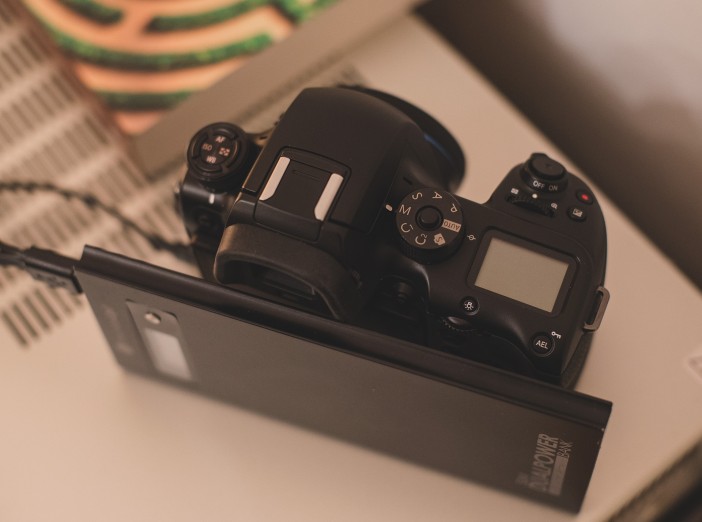
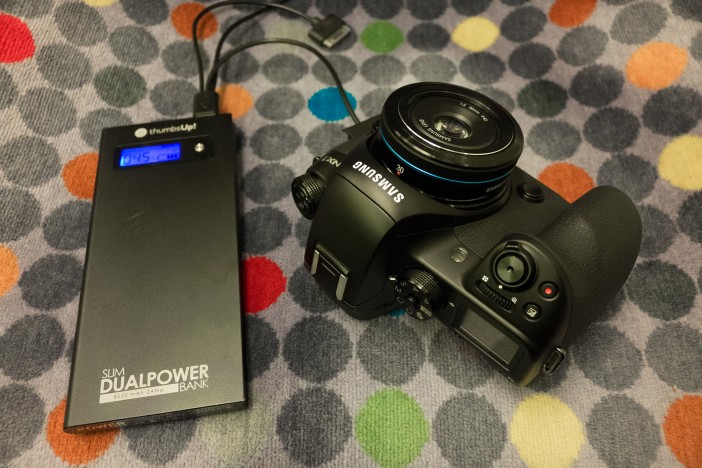
The DCI 4096 x 2160 mode on the camera is actually just 3840 x 2160 cropped vertically and then upscaled. The impact this has on image quality is extremely minor but there’s no real point shooting it even if you need the 1.85:1 aspect ratio it offers, because you can do the same crop & upscale in post very simply. 3840 x 2160 gives you a wider choice of frame rate including 25p and 30p, not just 24p. 25p is particularly important when shooting in PAL regions like Europe.
The zoomed focus assist can’t be moved around the frame currently on the NX1. Hopefully there will be a firmware fix for this. Until then, the Atomos Shogun has the best magnified focus assist for 4K shooting available right now, which can be swiftly dragged around with the massive touch screen. In fact the 1920×1200 display is so crisp you often don’t actually need to zoom in to check focus really! Peaking on the NX1’s articulated display as I said in my review works superbly, much better than on the GH4 so that makes it far easier to use. The people who say the C100 Mk II ergonomics are the best thing since sliced bread are used to Canon DSLRs being absolutely terrible for video. The NX1 is small and lacks ND filters. Otherwise it is like a small C100. On this shoot I used the SLR Magic variable ND filter which performed admirably and allowed me to be far more exact with exposure and stricter keeping to fast apertures for a shallower depth of field when required. This for me, is better than a switch where you only have two or three strengths of ND.
What’s missing?
The AF system on the NX1 for stills is innovative and it’s one of the best in video mode (if you need it, I don’t) and often it’s very fast, but it doesn’t match the 7D Mark II for sports shooting, nor does Samsung have as good a lens line-up, though the 16-50mm F2.0-2.8 OIS zoom is cutting edge. For manual focus and video you can adapt a huge range of lenses to the NX1’s mount and shoot away pretty happily. Reduced rolling shutter skew in 4K would have been nice – helping that would have been a lower megapixel count and higher sensitivity like the Sony A7S. I hope Samsung consider such an option in future.
Conclusion
Samsung are one of the largest semiconductors manufacturers in the world with one of the biggest investments in chip design R&D. It shows with the NX1. I can’t stress enough how different this camera is under the hood to a high end Canon or Nikon DSLR. As cameras move from the optical / photographic era to the computing era this advantage is going to become more and more pertinent.
Some of the technology utilised here is simply not found on anything else it competes with. Unless Samsung set up a supply chain to Canon & Nikon they are going to reap the rewards for a very long time on future cameras of such bespoke tech. There’s little evidence at the moment that Canon & Nikon are on a level playing field when it comes to semiconductors. In my view they’re condemned to buying off the shelf hardware and sensors for future cameras just to stay competitive and gone will be any kind of bespoke image quality advantage which Canon historically have enjoyed with their CMOS sensors prior to the 5D Mark III. Canon’s recent remarks that they will simply use whatever sensor is best, no matter who makes it, hints that their management are resigned to this fate anyway.
Semiconductors wise, the NX1 is literally the $3k 5 core power house with custom chips for tasks like H.265 to the 5D Mark III’s single core $200 netbook. None of this matters if the ergonomics and usability aren’t up to the job as a camera. The surprise for me is that NX1 undoubtedly is. It was a pleasure to shoot with and it’s also a bargain. The technology inside this camera has taken a serious investment, millions of dollars to realise. You have the end result in a $1500 camera.
I’m holding off on my shootouts and comparisons for now with the other cameras because when the Atomos Shogun arrives the playing field is going to shift. It will be very interesting which 4K output looks nicest from the NX1, A7S and GH4 once the various codecs and compression ratios are taken out of the equation. Meanwhile for 1080p delivery there are other options in the mix notably the Blackmagic Pocket Cinema Camera and Nikon D750. I’ll add these to the comparison as well.




